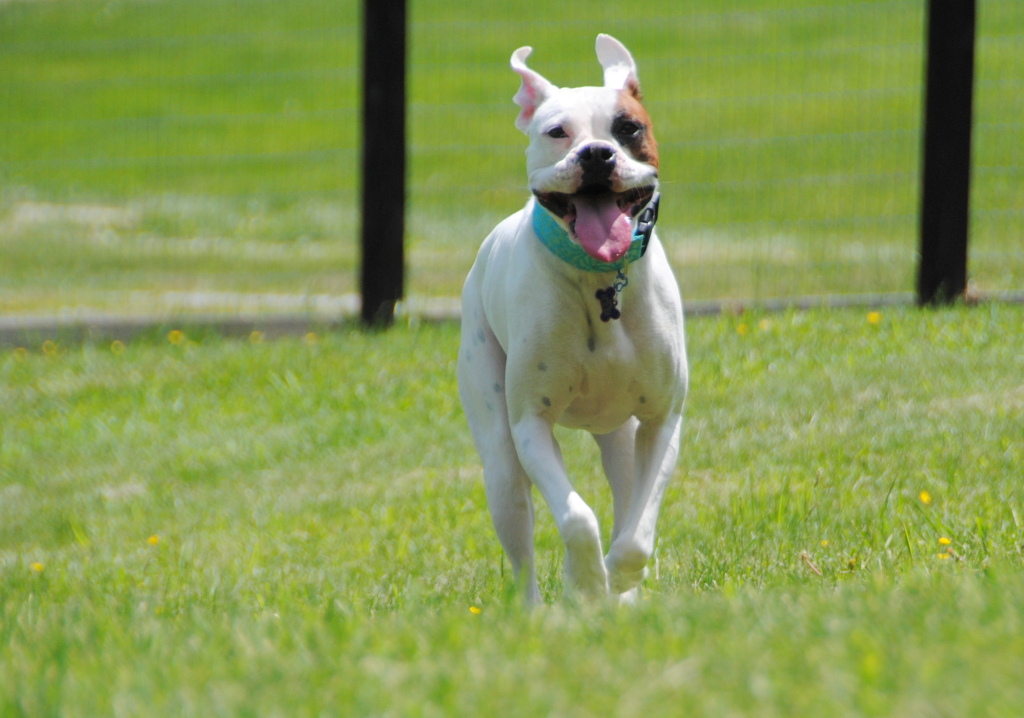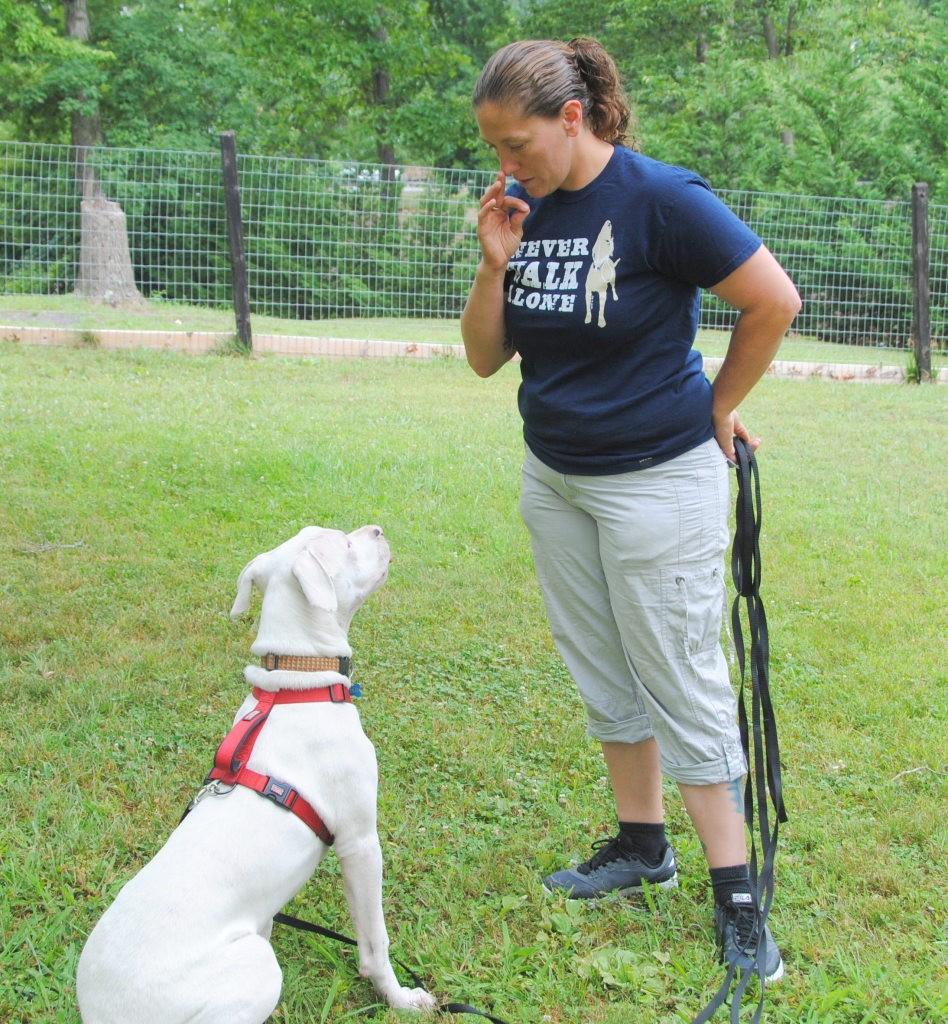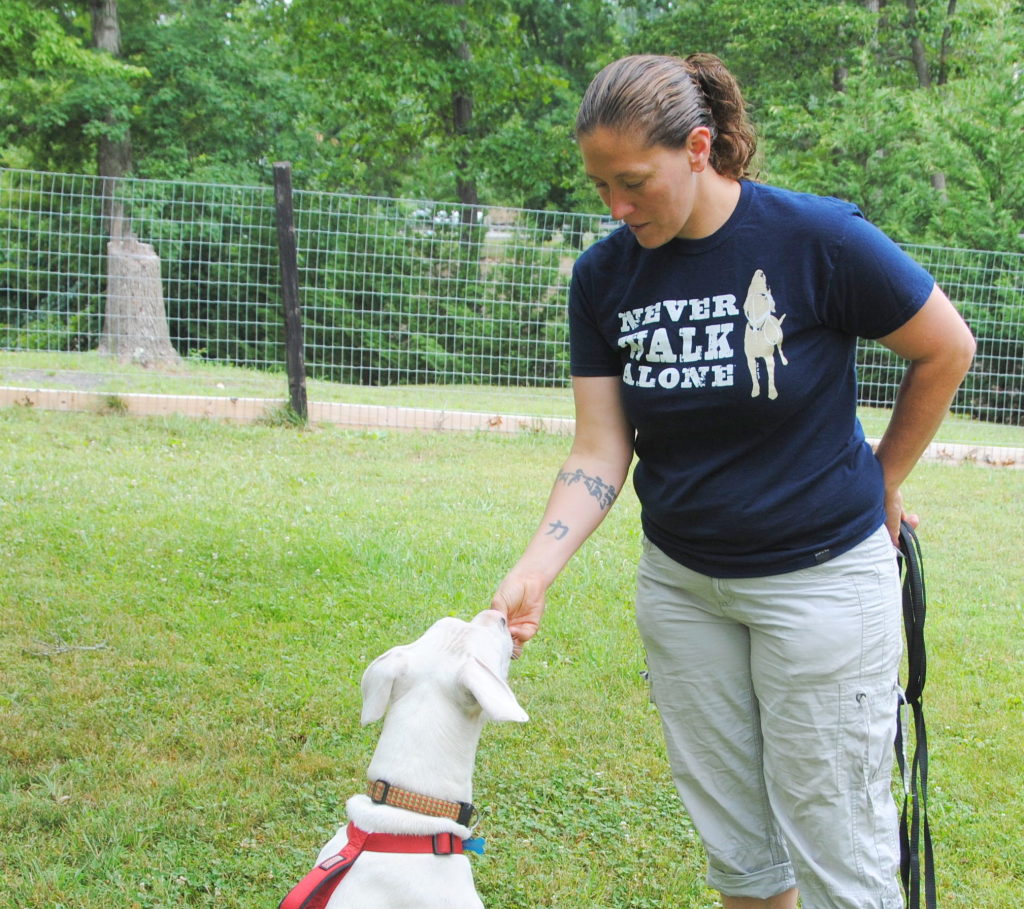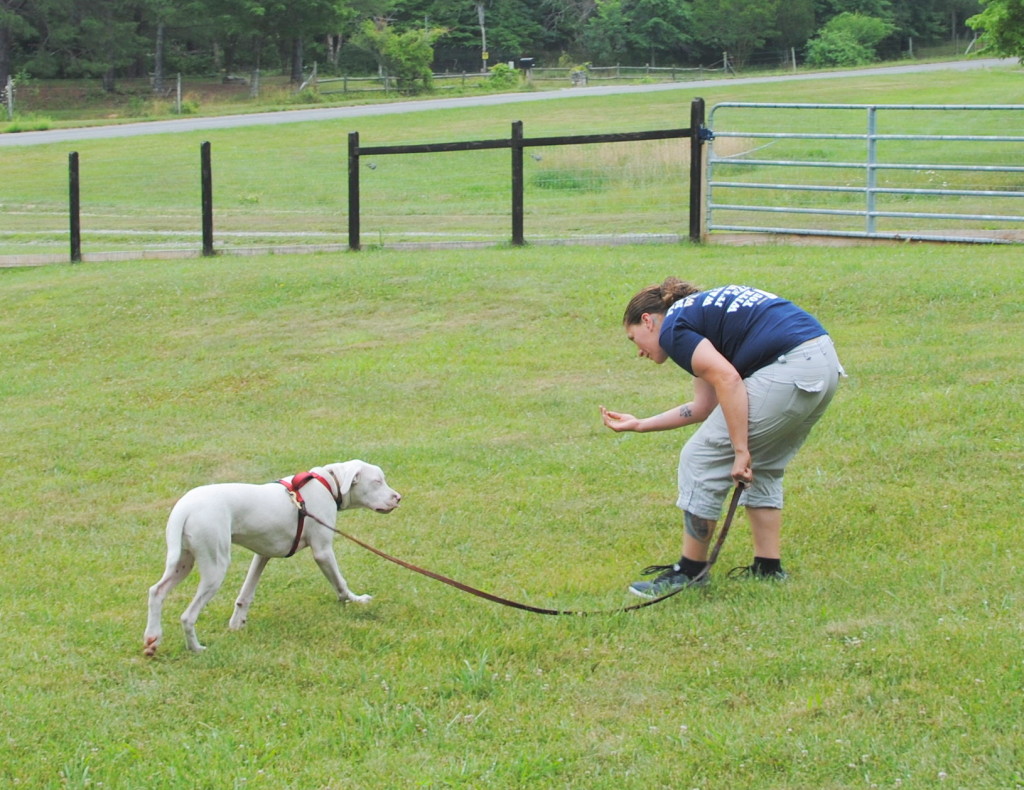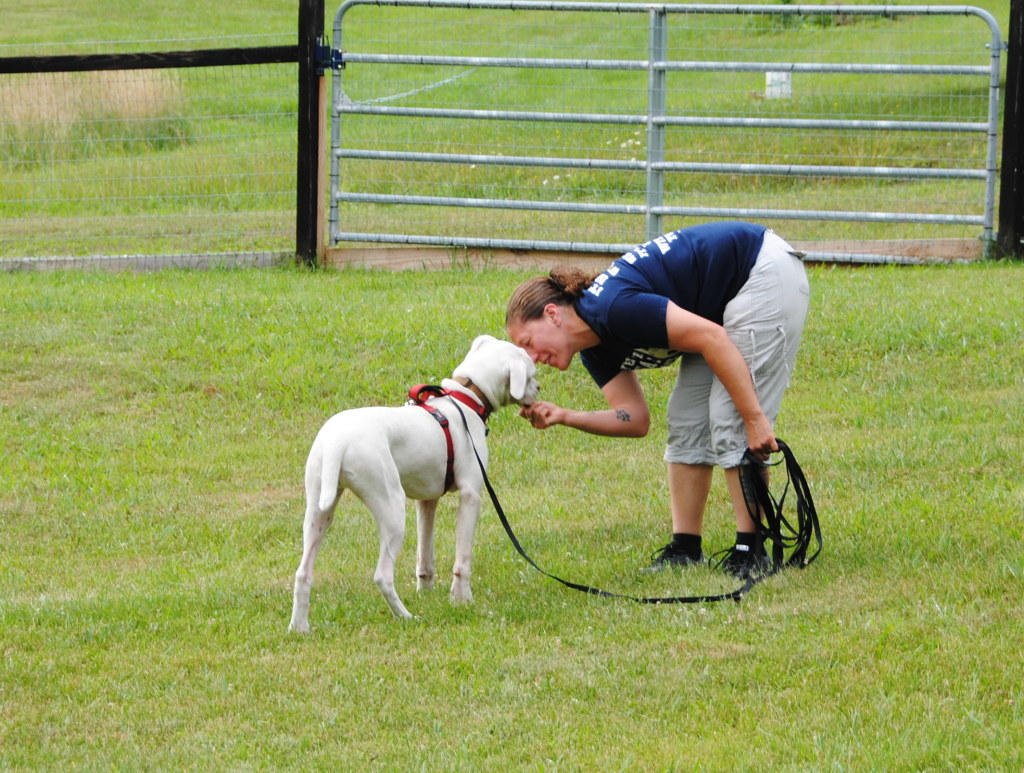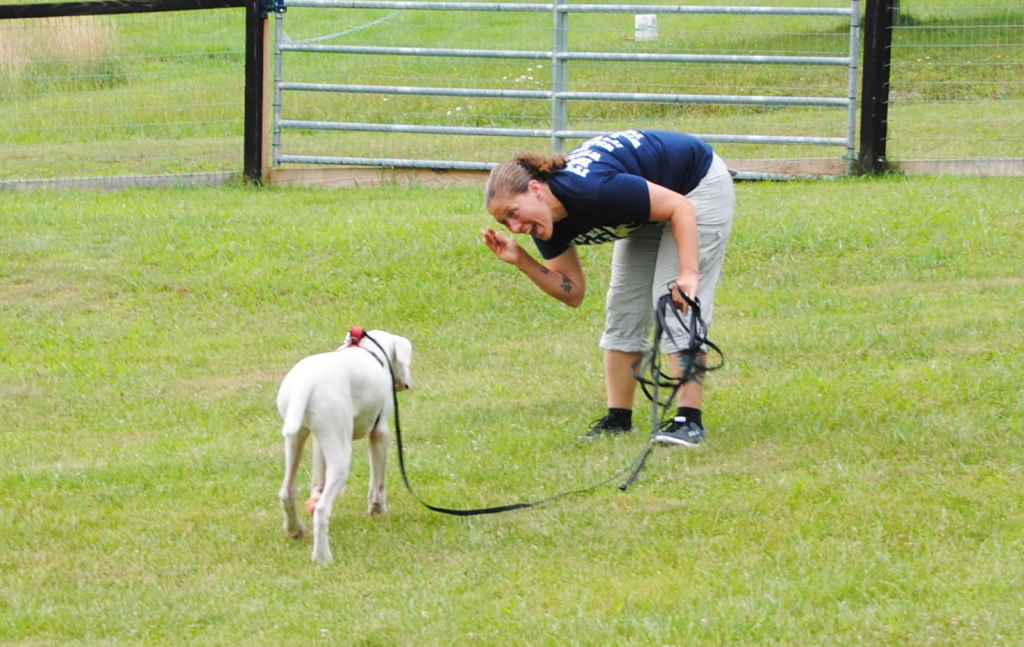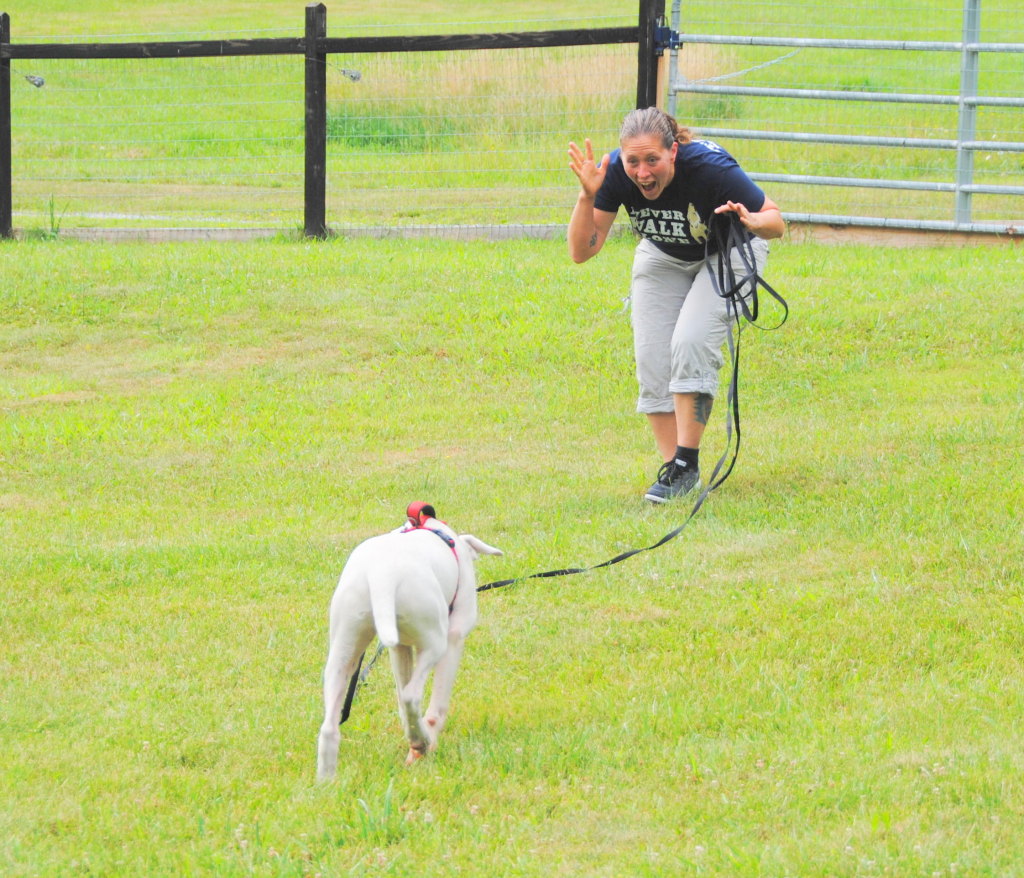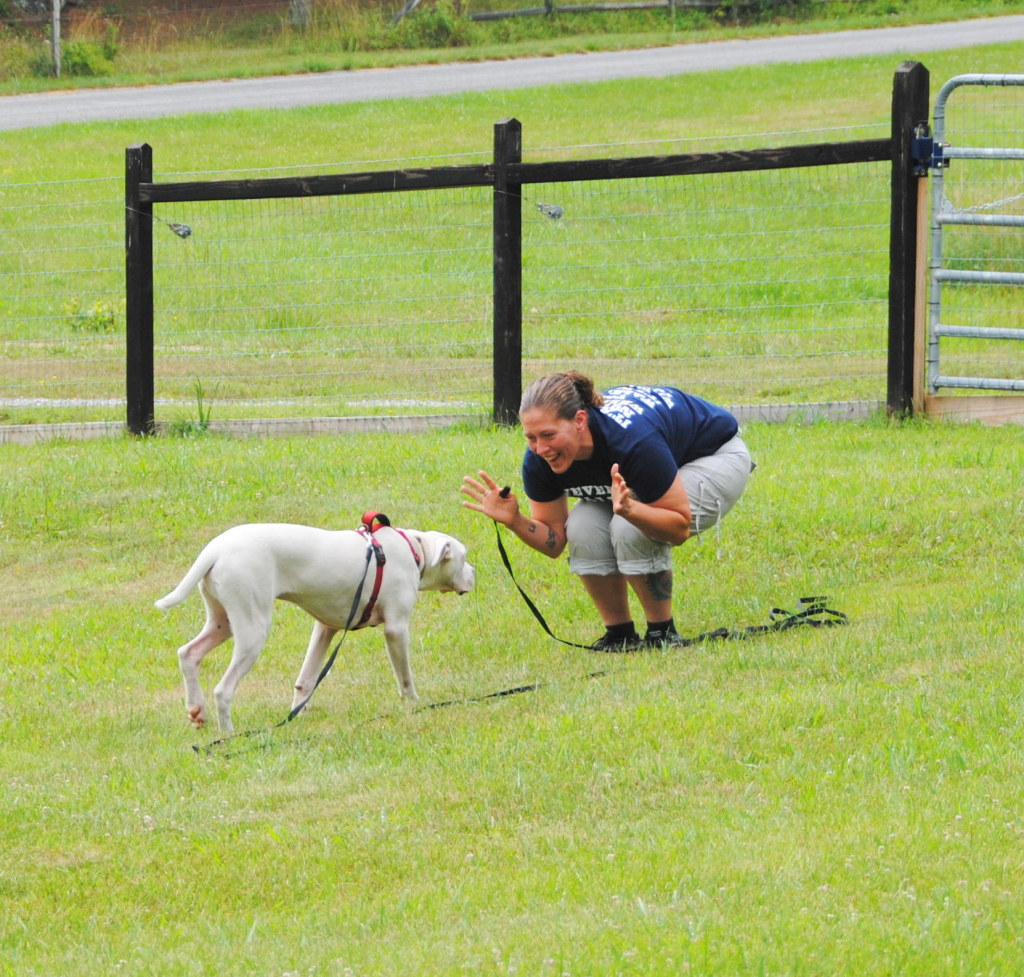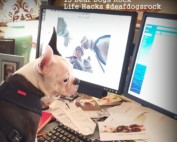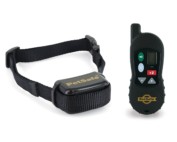I want to thank Michelle Hunting who is the Author of “Come Boy!” for believing in me enough to ask me to contribute to her new dog training book. I am honored she asked me to contribute my thoughts on deaf dog recall training. I was excited to write Chapter 12 titled “Recalls For Deaf Dogs”. It was my pleasure sharing some of my deaf dog recall tips with fellow deaf dog owners and advocates.
I also want to thank dog trainer Bobbie Patterson Wiggins and her deaf puppy Riley for being my models so I could photograph them to show visual images of my tips in action. Bobbie did a great job illustrating the “come” sign cue training by using consistent positive reinforcement training techniques. I hope our Deaf Dogs Rock community will use some of my tips in teaching their deaf dogs to “come”. The “come” sign is one of the most important sign cues you can teach a deaf or hearing dog because sometimes this sign can make the difference between the life and death of your dog.
Photo of Deaf dog Nitro by: Christina Lee titled: “Joyful Exuberance”
Michelle’s book “Come Boy!” is now available and you can now pick up this wonderful training resource on Amazon or Kindle. She has great advice on easy teaching methods you can do right at home to teach your hearing and deaf dogs to “come”. The “come” command is one of the most important training commands we can teach our hearing and deaf dogs. A good recall can save a dog’s life!
Recall Training for Deaf Dogs – “Recalls For Deaf Dogs” by: Christina Lee – Deaf Dogs Rock
Training a deaf dog to have a solid recall involves commitment to consistent and lengthy training, along with repetition and rewards through positive reinforcement techniques.
Because a deaf dog must be looking at the handler before it can be recalled, mini sessions of “watch me” signing and training are crucial. This training consists of putting the deaf dog on a leash, having a pocket full of high value treats, and every time the deaf dog makes eye contact with you, marking the correct behavior with an open flash of your hand or a thumbs up sign (instead of the sound of a clicker) and then immediately treat, treat, treat. Repeat often. Start in an environment with little or no distractions. I start inside in my living room and have the deaf dog tethered to me. We practice in different areas of the house with different treats. Many times I will incorporate the come, sit, and wait sign cues one right after the other and mark each cue after the dog has performed the sign cue with an open flash of my hand and a treat. This technique keeps my deaf dog from getting bored and also keeps him guessing on when and what treat he will get.
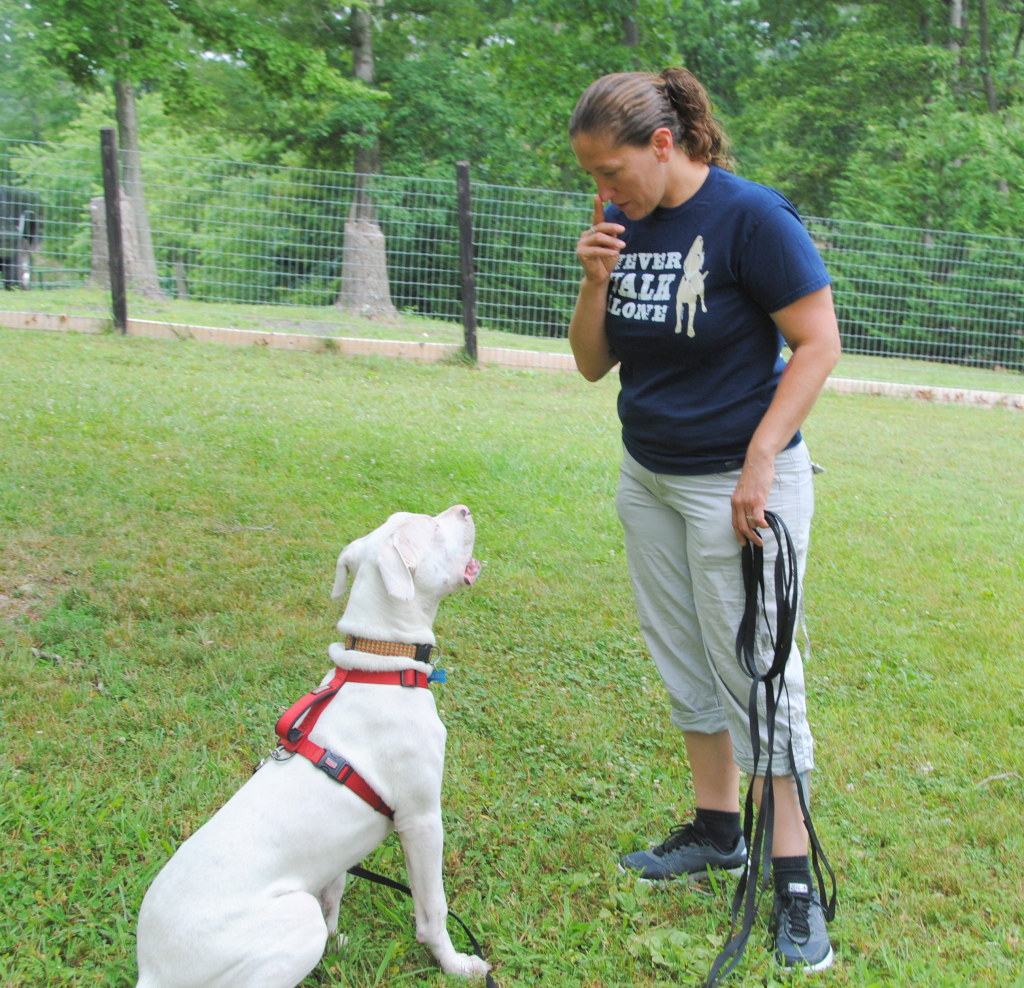 Above: Bobbie giving deaf Dogo puppy Riley the “watch me” sign by pointing to her nose.
Above: Bobbie giving deaf Dogo puppy Riley the “watch me” sign by pointing to her nose.
Bobbie marks Riley’s correct response to the “watch me” sign by doing a 3 finger flash to take place of the sound of a clicker (a visual marker) to mark the dog’s correct response.
Directly after Bobbie marks Riley’s response with an open 3 finger flash of her hand (some people will use a thumbs up sign instead of a flash) then she follows up with a high value treat.
Once the watch me training progresses, then you can start mini sessions inside the house for come. When I sign come to my deaf dogs, I use my hand with two fingers and motion the dog to come to me.
Tools you will need for recall training a deaf dog:
Collar
6-foot leash
20-or 30-foot long line
Treat pouch
High value treats (you can use turkey meatballs or light bologna cut into small pieces)
Positive body language (smile and clap wave)
Patience and a consistent training schedule
I first start off only a couple of feet away from my deaf dog and motion the dog to come with a come sign. When the deaf dog comes, I give the dog an open flash of the hand (instead of the sound of a clicker to mark the correct response), and then the pup gets a high value treat as a reward. I repeat this process throughout the day and in several different rooms throughout the house. Always do your recall training with a high value treat or favorite toy, and mix things up so when the dog comes to you, he/she is in for a nice surprise.
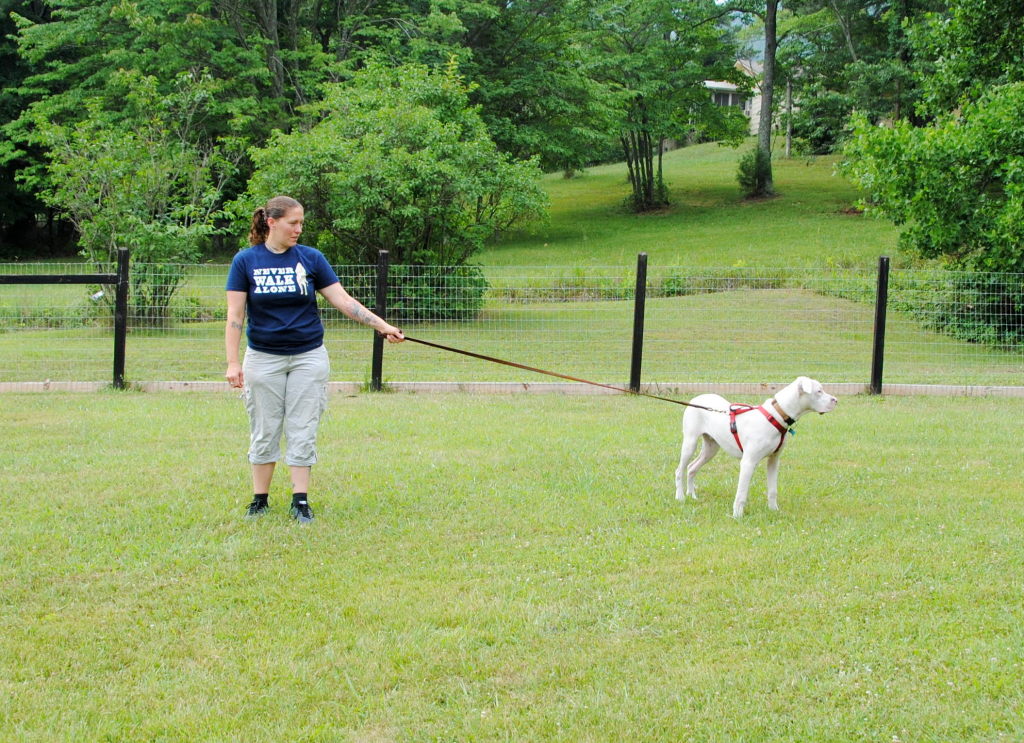 Bobbie encourages deaf dog Riley to be distracted so she can practice “watch me” signing as well as “come boy” signing.
Bobbie encourages deaf dog Riley to be distracted so she can practice “watch me” signing as well as “come boy” signing.
Bobbie asks for the “Come Boy” sign and Riley comes because he knows something positive is about to happen (he gets a smile, a 3 finger flash followed by a high value treat).
 Notice Bobbie’s body language? She smiles as soon as Riley starts to walk in her direction.
Notice Bobbie’s body language? She smiles as soon as Riley starts to walk in her direction.
Once my deaf dog in training consistently comes to me inside my home, I move our short training sessions to outside our home in order to add outside distractions to our training. I go outside and do short recalls with the deaf dog by just using a 6-foot leash. I let the puppy or dog become distracted by whatever is going on outside and then wiggle the leash, and when the dog turns in my direction and makes eye contact with me, I give the come sign. When the dog starts to move in my direction, I SMILE. I then give the dog an open flash of my hand to mark the correct response and treat. I also make a big deal of the dog coming to me by doing a “hand wave” which is like clapping to a hearing dog.
I want to be extra demonstrative each time so the deaf dog I am working with knows how happy I am to see him/her. My body language has to be positive so my deaf dogs will run right to me. I make a big deal of “come” each time so the deaf dog I am working with knows how happy I am to see them. My body language has to be positive so my deaf dogs will run right to me.
Since we truly believe in Positive Reinforcement Dog Training part of that training is also positive body language. A deaf dog is very tuned into their handlers facial expressions and body language like how Bobbie appears to be excited when Riley “comes” to her.
When the deaf dog is consistently coming to me on a leash outside, I add a long line to our training program. A long line is like an extra long leash and comes in different lengths. I purchased a 20-foot line for my deaf dog recall training. You can purchase one at most pet stores.
I clip a 20-ft line on my deaf dog and let the dog explore for a while. I also start with mini sessions of watch me training outside on the long line, but I start with the deaf dog not going more than 6 to 8 feet away from me. Once the deaf dog is consistently checking in with me, I start giving my sign for come. At first I am just a few of feet away, but as we continue with our training, I increase the distance.
Your deaf dog will always read your facial expressions and your body language so it is so important to show your happiness and excitement towards you deaf dog when he/she gets it right.
I practice recall training for several days and sometimes change it up. Sometimes I will run the other direction with the 20-foot line attached and then suddenly turn and give the come sign. Deaf dogs are known as “velcro” dogs because they like to be near their humans at all times so recall training with them is fun. In our sessions with Bobbie we also added distractions by me in the back ground where I would give Riley a treat and Bobbie would practice the recall with a higher value reward so Riley would learn that coming to Bobbie always had the highest priority. It really helps you with your recall training if you can enlist the help of a friend to do distractions while practicing recall on a long line.
When working with or living with a deaf dog, you must never ever chase the dog if the dog accidentally comes off the lead. If this happens, your first instinct may be to chase the deaf dog, but what you want to do is run in the opposite direction so the dog will chase you, or you should drop down to the ground. Out of curiosity, dogs cannot resist running up to a person on the ground. They just have to see what a person lying on the ground is up to, and in most cases, both a deaf or hearing dog will run up to a person lying on the ground and lick that person on the face. If you are working with a deaf dog who gets bored easily like my deaf dog Nitro does, then sometimes when I ask for a come, I will also ask for a sit and then play a scent game. I will motion to him to come to me, and then put my closed hands behind my back and slip a treat into one of them.
After I choose a hand to hide the treat in, I put both hands in front of him for him to choose which hand is hiding the treat. The dog will put a paw or lick the hand he/she thinks the treat may be in. By doing this fun “pick-hand-number-one-or- hand-number-two” game, the monotony of training is broken by adding some fun to our sessions.
Most deaf dogs get excited when I incorporate a scent game into their training just for fun. Both of my deaf dogs think “it’s always good to check in with my mom because she has fun or yummy things for me when I go to her.”
You can teach your dog that coming to you quickly will result in good things happening like getting a favorite toy to chase or getting the chance to go explore somewhere.
My next step in recall training is to randomly give the come sign even if your deaf dog is engaged in playing with another dog. If you make sure your dog gets a treat just for coming to you at a dog park (Make sure you treat your dog when there are no other dogs around to avoid the possibility of an altercation.), as soon as your dog comes to you, give an open flash of your hand and then a high value treat and a “wave clap.” After the dog has come to you and gotten his/her treat, then give him the sign to “go play.” It is very important to repeat this training session over and over again so your deaf dog knows if he comes to you, he/she will get a treat and then be allowed to return to playing with other dogs. I can’t tell you how many times I see people with hearing dogs at the dog park, and since the owners of these dogs got in the habit of only calling their dog to them when it was time to leave, their dogs will not come to them ever! I was at the dog park one time, and it took this poor gentleman five hours to catch his dog.
Even with a reliable recall, I personally don’t recommend letting a deaf dog off leash in an area where there is no fencing. I know some people let their deaf dogs run around just like hearing dogs, but when you live with a deaf dog, you should be the dog’s advocate and take extra precautions to keep the deaf dog safe at all times. There are exceptions to this rule if you have a reliable dog who doesn’t want you out of his sight and sticks to you like glue then you know if your dog is going to stay by your side or not. Every dog is different.
I also have taught Nitro and my other deaf dog Bud the signs for time to drive home so they know if I sign this cue to them, they will both sprint to the gate at the dog park and wait for me. As soon as we get into the car, they get a treat. Time to drive home is another form of a recall, but it is more specific. This sign tells the dogs it is time to go and get into the car where good things happen.
Also, with deaf dogs, we never punish but always redirect them. .
In addition, I have a special sign for both of my deaf dogs, come to mama, and I pat my hand on my knee over and over. What that means to all four of my deaf dogs is no matter what they have done, they can approach me and I will rub them all over. By signaling them in this way, no matter what happens, I have a secret cue that also means come and everything will be okay. I truly believe sometimes it is also good to have a back up come cue. When Bud gets nervous around strangers out in public, sometimes he is so distracted he doesn’t even recognize the come cue–that is until I get down low to the ground at his eye level and pat my knee. For some reason he will come 99% of the time when I use this cue because this is my comfort cue, which means if he comes to me, I will soothe him and protect him. So I have a direct come cue and a come and I will comfort you cue.
If you are like me and have hearing and deaf dogs, then I do have a universal cue which works with all six of my dogs. They all know the sign for treat. I only use this sign when I need all six hearing and deaf dogs to come to me immediately with no hesitation. When I use the treat sign, all six of them come running into the house, and they immediately get an open flash of my hand and a biscuit from the biscuit jar.
Training dogs that are deaf to come may present some special challenges, but the process and results can be not only fun but rewarding.
Photos show deaf dog trainer Bobbie Patterson Wiggins working with her deaf Dogo Argentino puppy Riley on recall at the Deaf Dogs Rock Headquarters in Salem, VA.



